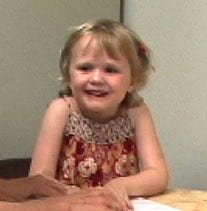 This module provides an introduction to literacy instruction for learners with complex communication needs, and describes the impact of literacy instruction for Anna, a young girl with autism spectrum disorders ( ASD).
This module provides an introduction to literacy instruction for learners with complex communication needs, and describes the impact of literacy instruction for Anna, a young girl with autism spectrum disorders ( ASD).
The major topics include:
Educational resources for AAC
 This module provides an introduction to literacy instruction for learners with complex communication needs, and describes the impact of literacy instruction for Anna, a young girl with autism spectrum disorders ( ASD).
This module provides an introduction to literacy instruction for learners with complex communication needs, and describes the impact of literacy instruction for Anna, a young girl with autism spectrum disorders ( ASD).
The major topics include:
Janice Light & David McNaughton
This free webcast provides information on effective instructional procedures to teach literacy skills to individuals with ASD and limited speech.
The webcast includes both detailed instructional procedures, as well as case examples (including videoclips) of reading and writing instruction with children and adolescents with ASD.The webcast provides information on how to teach key literacy skills, including
The instructional procedures are based on the recommendations of the National Reading Panel (2000), with adaptations to support the participation of individuals with ASD who have limited speech. These evidence-based procedures were developed as part of a federally funded research grant from the National Institute on Disability and Rehabilitation Research (NIDRR), as part of the AAC-RERC, under grant #H133E030018; and the Augmentative Communication Fund, supported by the Forklifts Annual Golf Tournament/Joe Strada Sr. Memorial Fund. Development of this wecast was supported by the U.S. Department of Education Office of Special Education and Rehabilitation Services under grant #H325K080333.
Kathy Drager, Janice Light, & David McNaughton
Webcast Description
This introductory level webcast on “AAC and Children” by Kathy Drager, Janice Light, and David McNaughton (Penn State University) is designed as an introduction to the use of AAC. It focuses on ways to provide communication opportunities, model the use of AAC, pause, respond to the child, and most of all, to have fun!
This webcast was produced as part of the work of the AAC-RERC under grant #H133E080011 from the National Institute on Disability and Rehabilitation Research (NIDRR)in the U.S. Department of Education’s Office of Special Education and Rehabilitative Services (OSERS). The production of this webcast also was funded by U.S. Department of Education grant H325K080333
Dr. Melanie Fried-Oken (Oregon Health & Science University) and Dr. Janice Light (Penn State University) present on cognitive science considerations in the design of AAC technologies for children and adults. Presented on June 28, 2012, at the AAC-RERC State of the Science conference in Baltimore, MD.